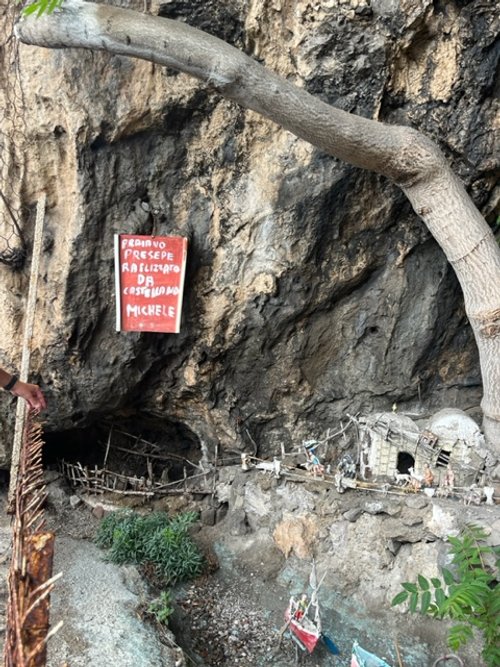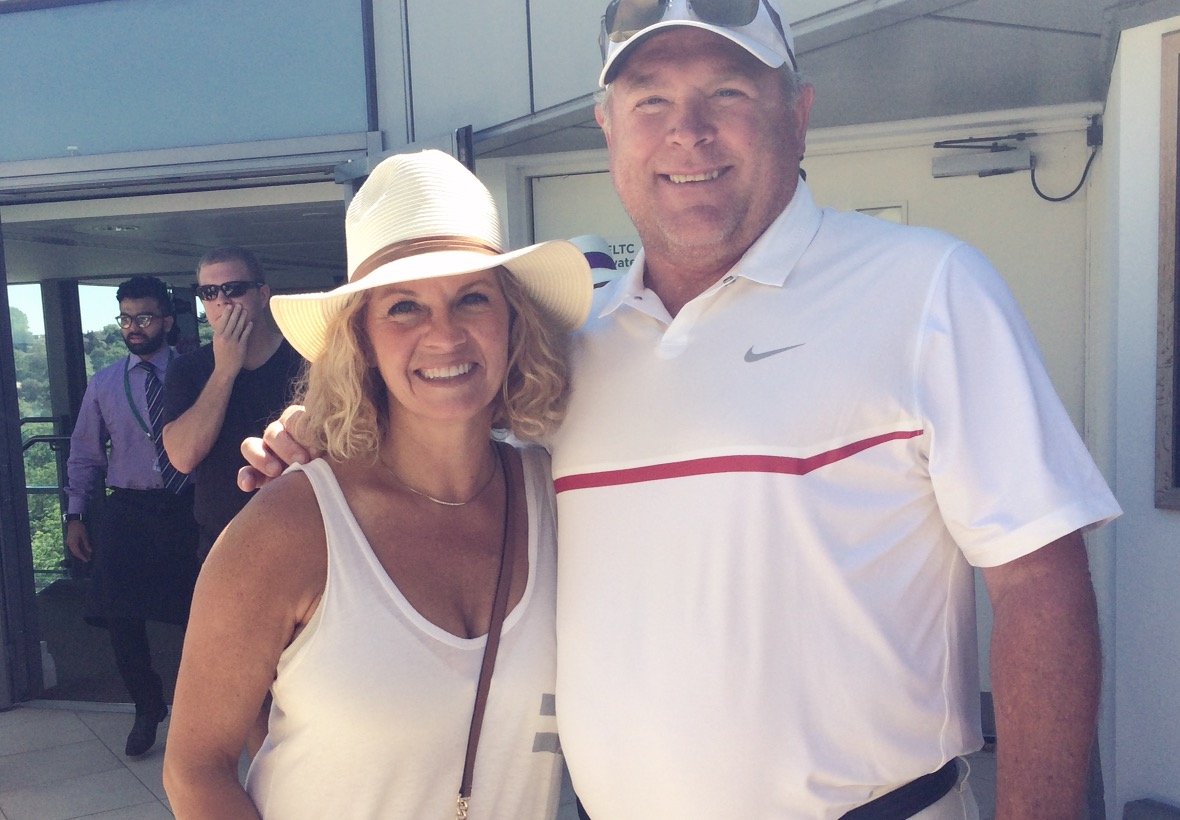The Things We Stumble On
Between the villages of Praiano and Positano on southern Italy’s Amalfi coast, lies a hidden treasure tucked in a cave by the side of the road. It’s easy to miss if you don’t know it’s there and hard to get a look at even if you do.
The work of art—a detailed replica of the city of Praiano-- sits in the base of the Grotto del Diavolo (Devil’s Cave), along a skinny highway with unforgiving margins, adjacent to the sea. The slight sign that flanks it reveals that it is a Nativity scene created by ceramist Michael Castellano. (The Nativity is an integral part of Italian culture during Christmas, but also year around.) The physical rendering of the city depicts Mary, Joseph and the crib, but it expands to include the city’s churches, markets, brightly colored homes, and cobblestone alleyways. It even depicts the coastline beneath the craggy rock face with the sea of boats and fishermen below. Ceramic figurines of people going about their daily lives—farming, cooking, carrying, walking-- accompany the structures making it feel like you’re looking at a moment snatched and frozen in time. Jasmine and bougainvillea dot the landscape, lemons drape from trees, birds fly overhead, wine bottles balance on tables, pasta sits on plates…no detail is overlooked. It’s as if the artist took a picture and fashioned it in tiny 3D form. The likeness to reality is uncanny. Locals say Castellano still adds a feature every year.
Sometimes the stuff we stumble on is even better than the stuff we set out to find.
Several years ago for my 50th birthday, my friends gave me a trip to Wimbledon. (I know, I know, I have marvelous friends!) Tennis had become my late-in-life sports love, and my best buddies knew, so a group of about ten of us—friends and family-- packed our summer whites and flew across the pond to watch Fed and Serena slap tennis balls and to eat strawberries and crème on the lawn.
London, for the record, did not disappoint. We taught ourselves how to navigate the Tube, a process as intriguing as it is an expedient way to travel. We went to St. John’s Wood, taking pictures like the Beatles crossing the street at Abbey Road. We walked the Bridge and rode the Eye. Hung out on the bank of the Thames and sat awestruck on the stage built by Lord Chamberlain’s Men.
But Wimbledon was the main event.
I had learned, over the course of several years as a burgeoning tennis aficionado, just enough about strokes and strategy to be dangerous (and annoying.) Armed with that and the passionate anticipation I remember from being a little girl who wore my baseball glove on the two-hour car ride from Oklahoma to Texas to take in a Rangers’ game, my friends and I packed onto the Tube in route to the English countryside and a slice of another world. As we disembarked at Charing Cross, joining the throng of people walking briskly in decidedly over-thought-out whites, I felt like a guest at Disneyland. We took pictures at the gate as we entered. Nobody ever wants to forget how that feels.
Wimbledon was amazing. We sat on the front row for men’s doubles watching people we had never heard of hit the ball alarmingly hard. We fell for personalities and picked favorites and sweated through our clothes. Then we went to center court where we watched Serena serve aces and Roger charge the net. Everything about it was grand. The tennis, the pageantry, the flowers, the food.
But what I loved best about London turned out to not be the tennis or the Tube or the road where the Beatles became. What I loved most about London was the ice cream I bought in a cone at a tree stand in Hyde Park.
It’s not advertised, this obscure hut that sells it. There wasn’t even a sign with offerings or prices. The crème de le crème of London was a make-shift counter stuffed between some trees at the turn of a giant field. A place one might unceremoniously trip over if out for an afternoon stroll. They don’t have 31 flavors and they need you to pay in cash. But when you walk away with a cone in your hand it’s as if all is right with the world.
Bono calls these treasures we discover on the way to other things “topline melodies.” He says (and he should know as a winner of 22 Grammys and the leader of the only band in history with number ones on the top 200 in 4 consecutive decades) that the tunes you hear around the corner-- the ones that rise above the noise and chatter-- are the ones you build your stories on. He says destiny arrives casually and that the melodies we aren’t looking for but simply can’t forget form the trajectory of our lives.
The unplanned, unforgettable prizes that we stumble upon feel like lucky addendums—surprises that the wind blew in while we were otherwise engaged. And that is half the fun. Part of the beauty of topline melodies is that we rarely ever find them. They find us.



